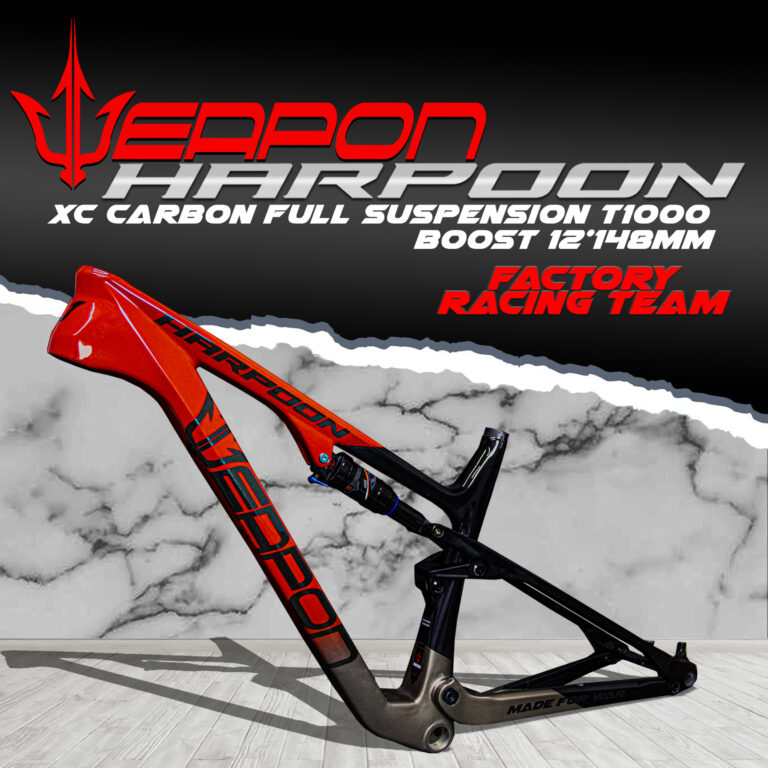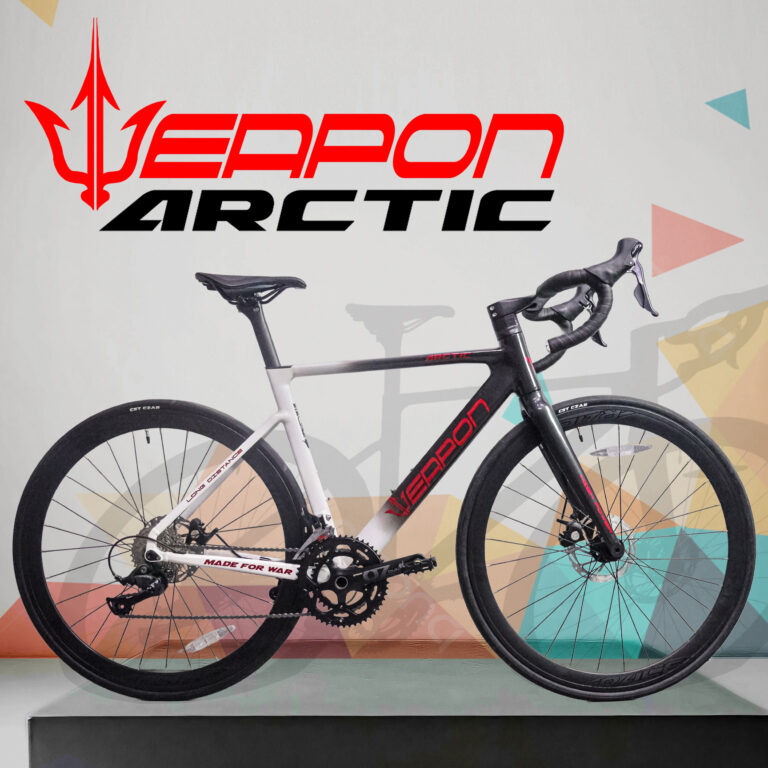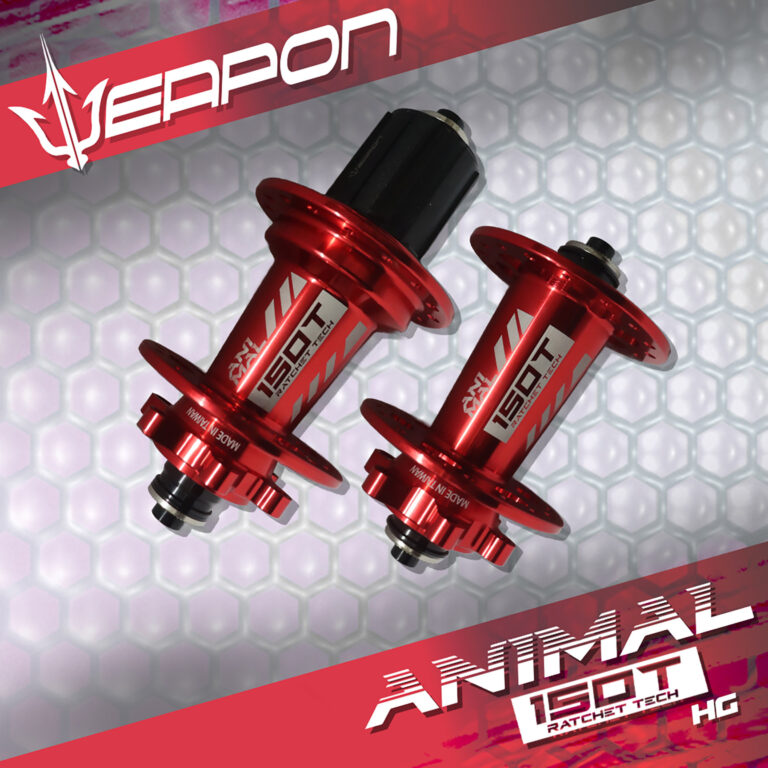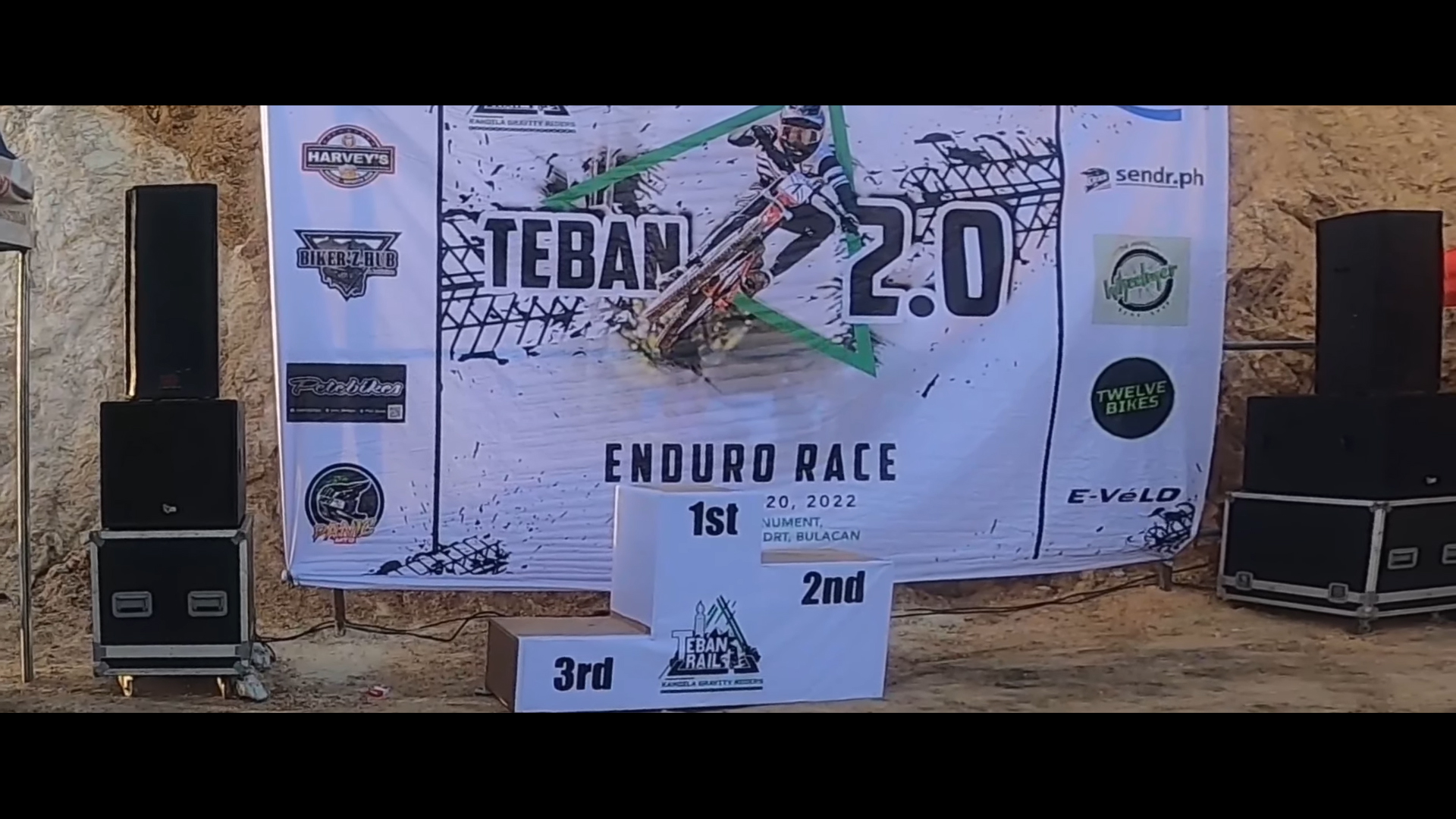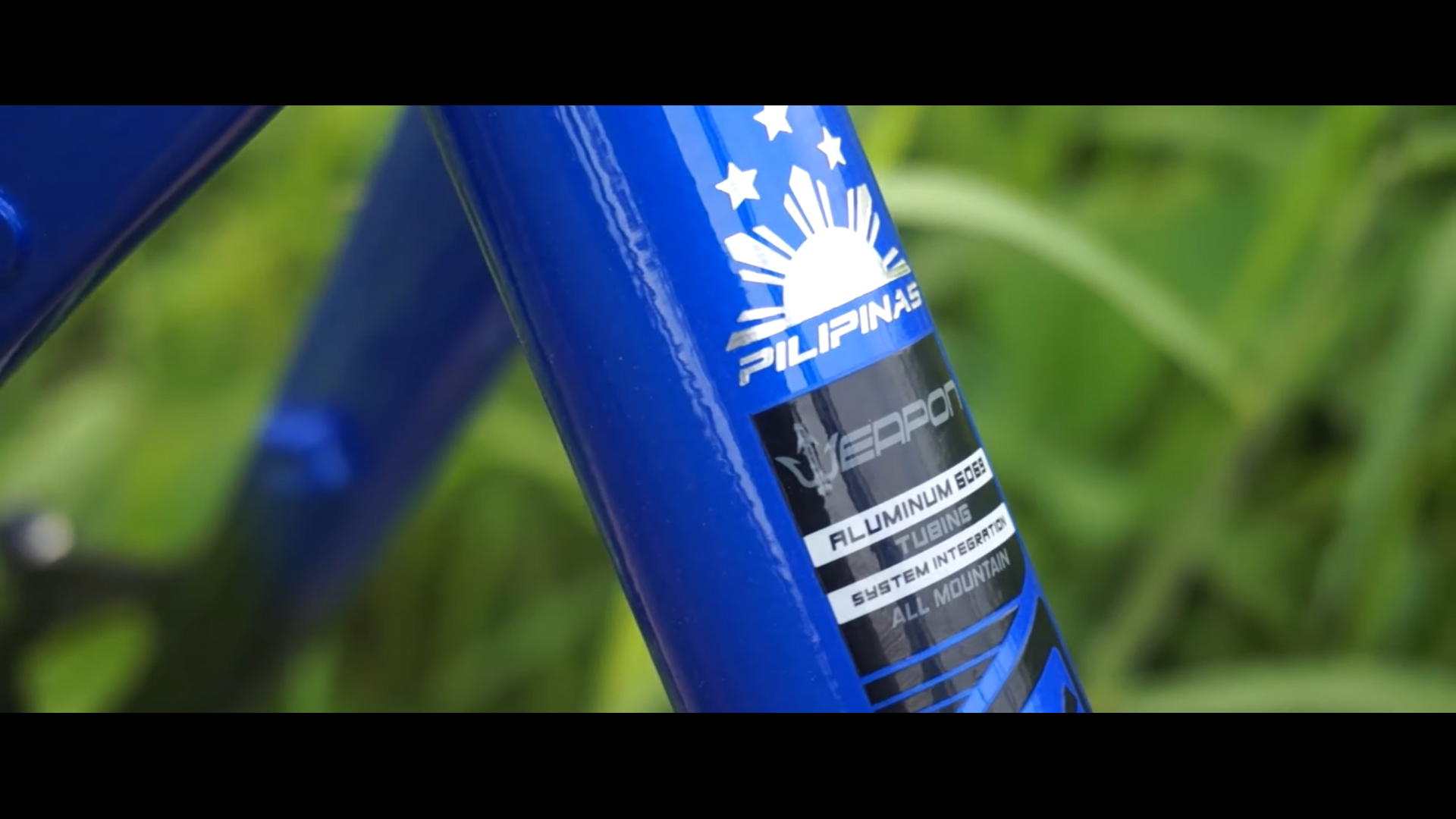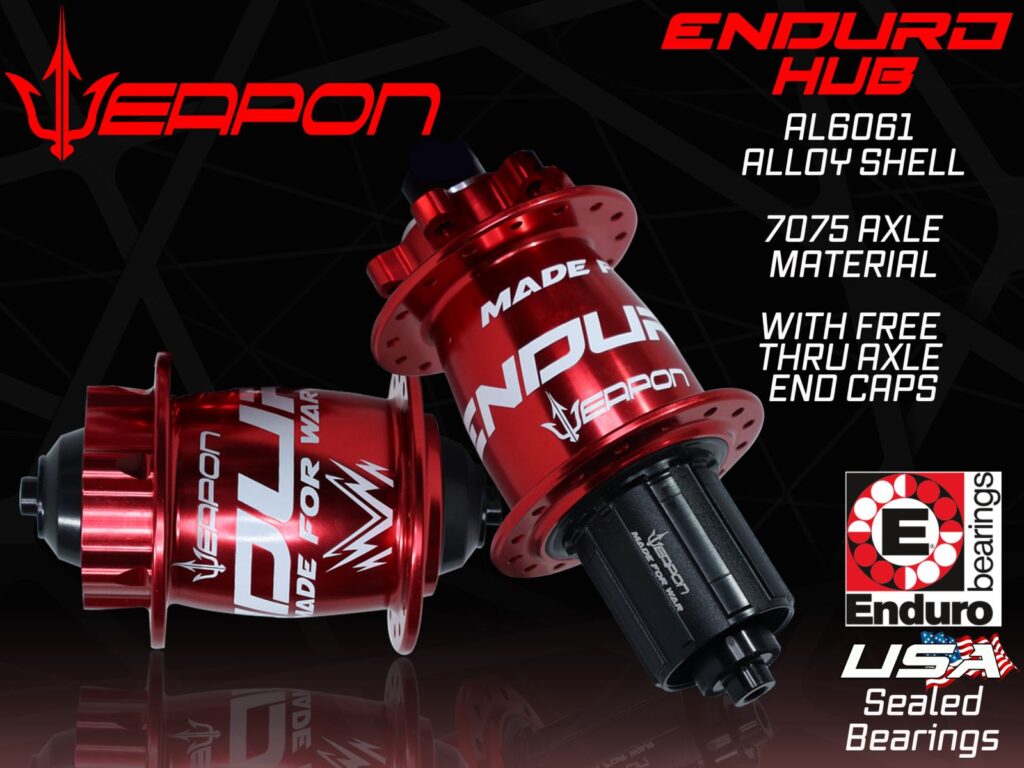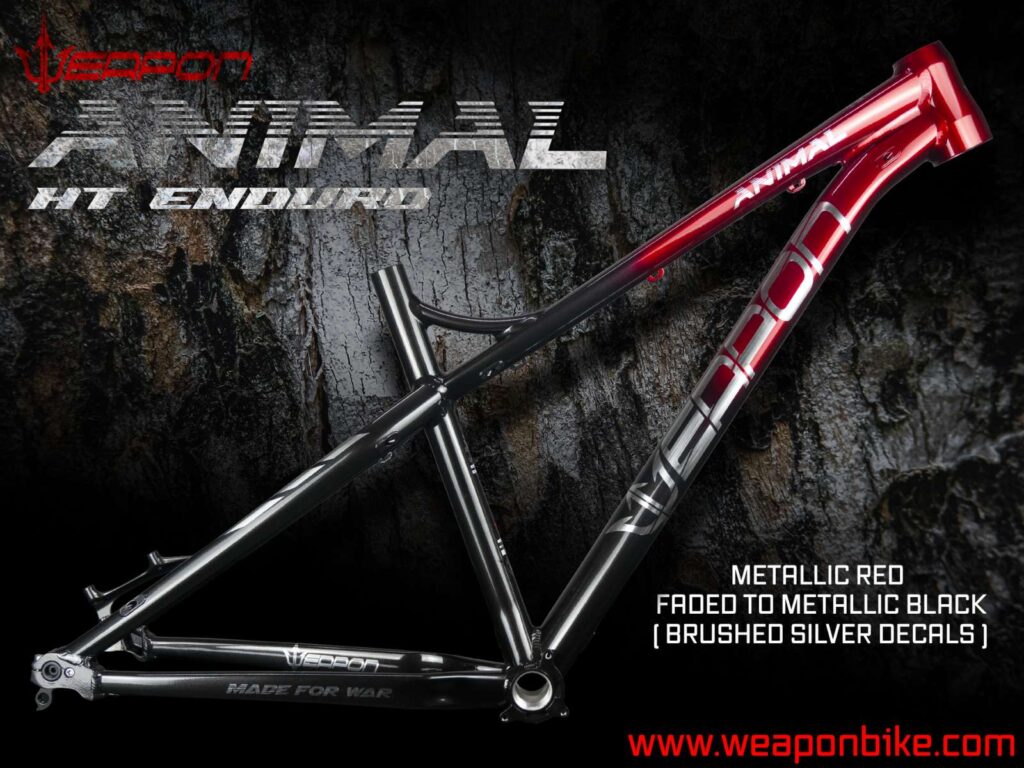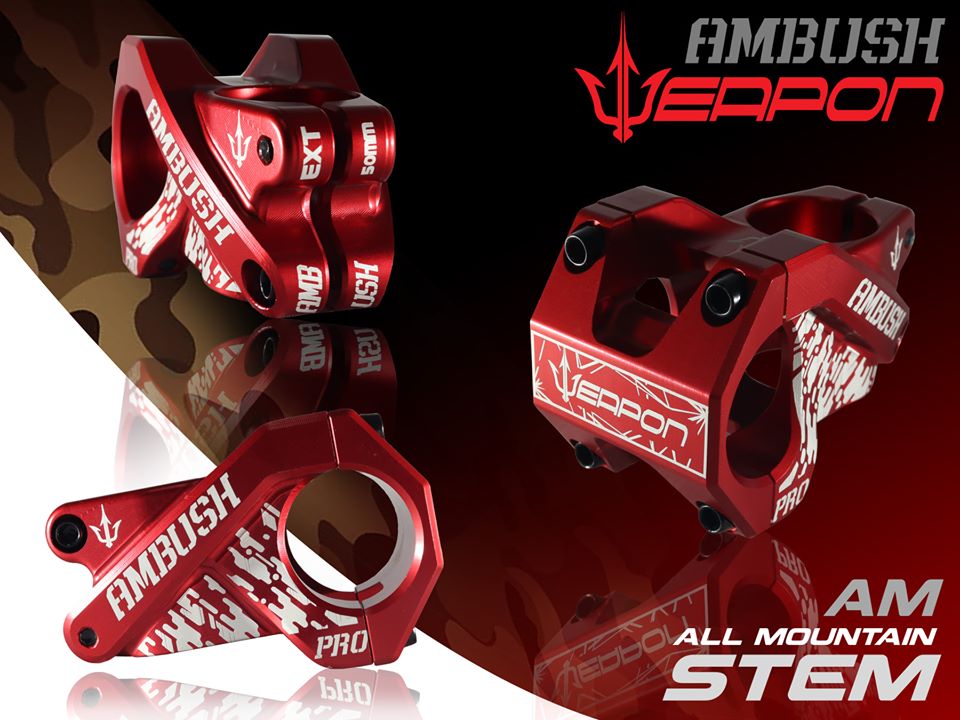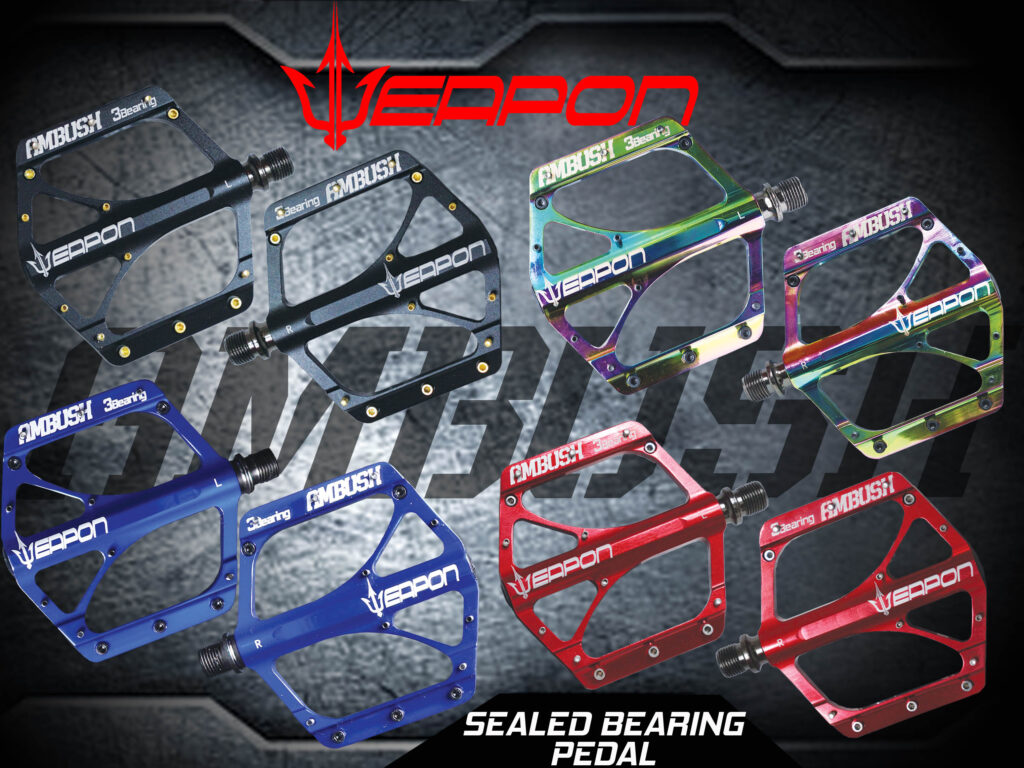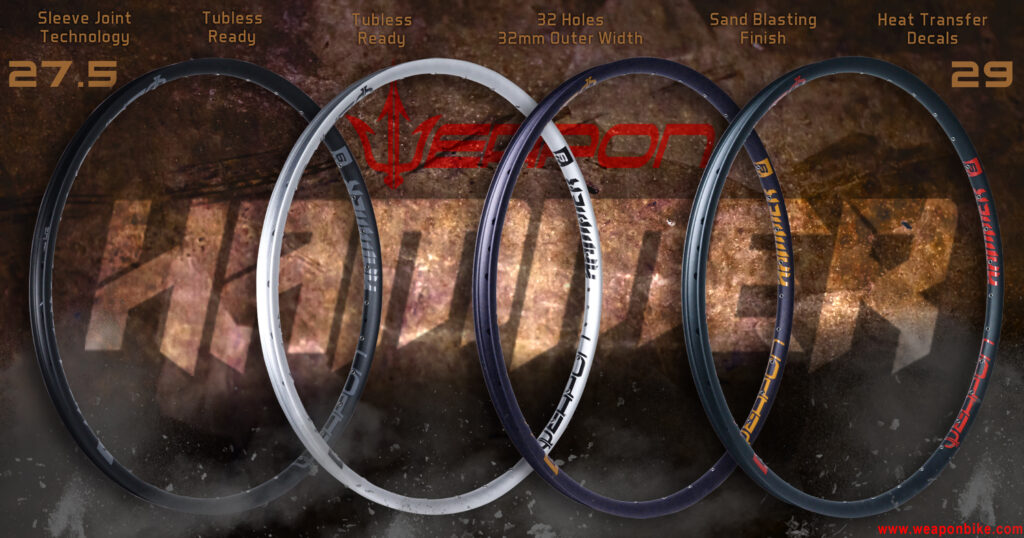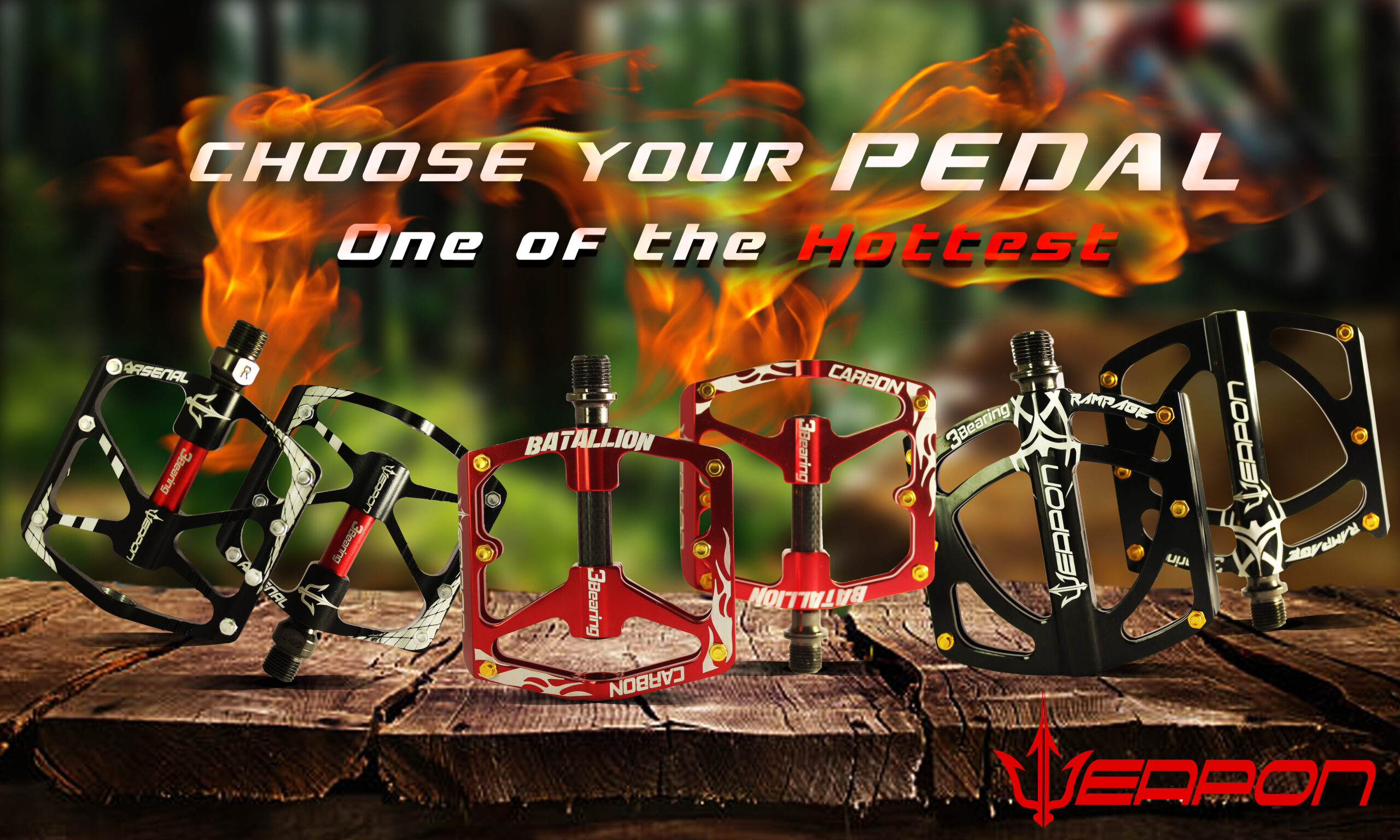WEAPON BIKE
CHOOSE YOUR WEAPON
FRAME
The bicycle’s main structural component is typically made of steel, aluminum, titanium, or carbon fiber. Comprising a top tube, head tube, down tube, shell of the bottom bracket, bench tube, seat stays, and stays of the chain (see image). A frame and fork marketed as a blend is known as a frameset.
FORK
The brace that holds the stanchions of a fork in place. Most mountain bikes have single crown forks. Downhill bikes typically use dual-crown forks, which are firmer and better suited to longer-travel cycles.
TUBELESS RIM
A tubeless rim is a type of rim used on a bicycle that is designed to be used without an inner tube. Instead, a tubeless-compatible tire is mounted on the rim and sealed with a liquid sealant. This creates an airtight seal between the tire and the rim, allowing the rider to run lower tire pressures without the risk of pinch flats.
CRANK
A bicycle’s crankset is the part of the drivetrain that transforms the rider’s leg motion into rotational motion for the chain or belt, which drives the back wheel.
SPROCKET
Sprockets are used in bicycles and other machinery to convey rotational motion between two shafts when gears are ineffective or to impart linear motion to a track, tape, or other similar device.
STEM
The stem of your bike can impact the way your bike handles and the way your upper body feels on the track. It is also very versatile and upgradeable, besides being one of the most essential bike components for comfort and handling.
PEDAL
Along with the rotational force of the feet, the pedals operate. They spin the gears that are connected to a chain while you drive the pedals forward. At the rear wheel, the chain then spins another series of gears to get it to spin and move the bicycle forward.
HANDLE BAR
A handlebar is a component of a bicycle that is attached to the steering column and provides a place for the rider to hold and control the direction of the front wheel. Handlebars come in various shapes and styles, such as drop bars and upright bars, each with their own advantages and intended use.
HELMET
A bicycle helmet is a specific kind of helmet made to lessen blows to a cyclist’s head during crashes while limiting negative side effects including peripheral vision interference.
SADDLE
A bicycle saddle, also known as a bike seat, is the part of a bicycle that a rider sits on. It is typically located on top of the seat post, which is the part of the frame that the seat is mounted to. The saddle is designed to support the rider’s weight and provide a comfortable place to sit while riding.
SEATPOST
A bicycle seatpost is a cylindrical tube that is inserted into the frame of a bicycle, and attaches the saddle to the frame. The seatpost is typically made of aluminum, steel, titanium or carbon fiber and it allows the rider to adjust the height of the saddle.
HANDLE GRIP
A bicycle handle grip is a component of a bicycle that is attached to the end of the handlebar and provides a place for the rider to hold the handlebar. They are typically made of rubber or foam and are designed to provide a comfortable and secure grip for the rider’s hands.
ROTOR
A bicycle rotor is a component of a disc brake system on a bicycle. It is a circular plate that attaches to the wheel hub and spins with the wheel. When the brake lever is applied, brake pads press against the rotor, creating friction which slows down or stops the wheel. Rotors come in various sizes, typically measured in millimeters, and are designed to fit specific brake caliper and hub combinations.
HYDRAULIC BRAKE
Hydraulic brakes allude to the fact that when the brake lever is lifted, a fluid is pressurized and runs all the way down to the brake caliper. Following this, the brake pad is squeezed to the wheel rim. There is no brake cord involved in the procedure with hydraulic brakes.
HUBS
The hub is the core component of the wheels of your bike (front and rear), which attaches through the spokes to the wheel’s rim and to which the axle is mounted, allowing the wheel to rotate on two sets of bearings freely.
